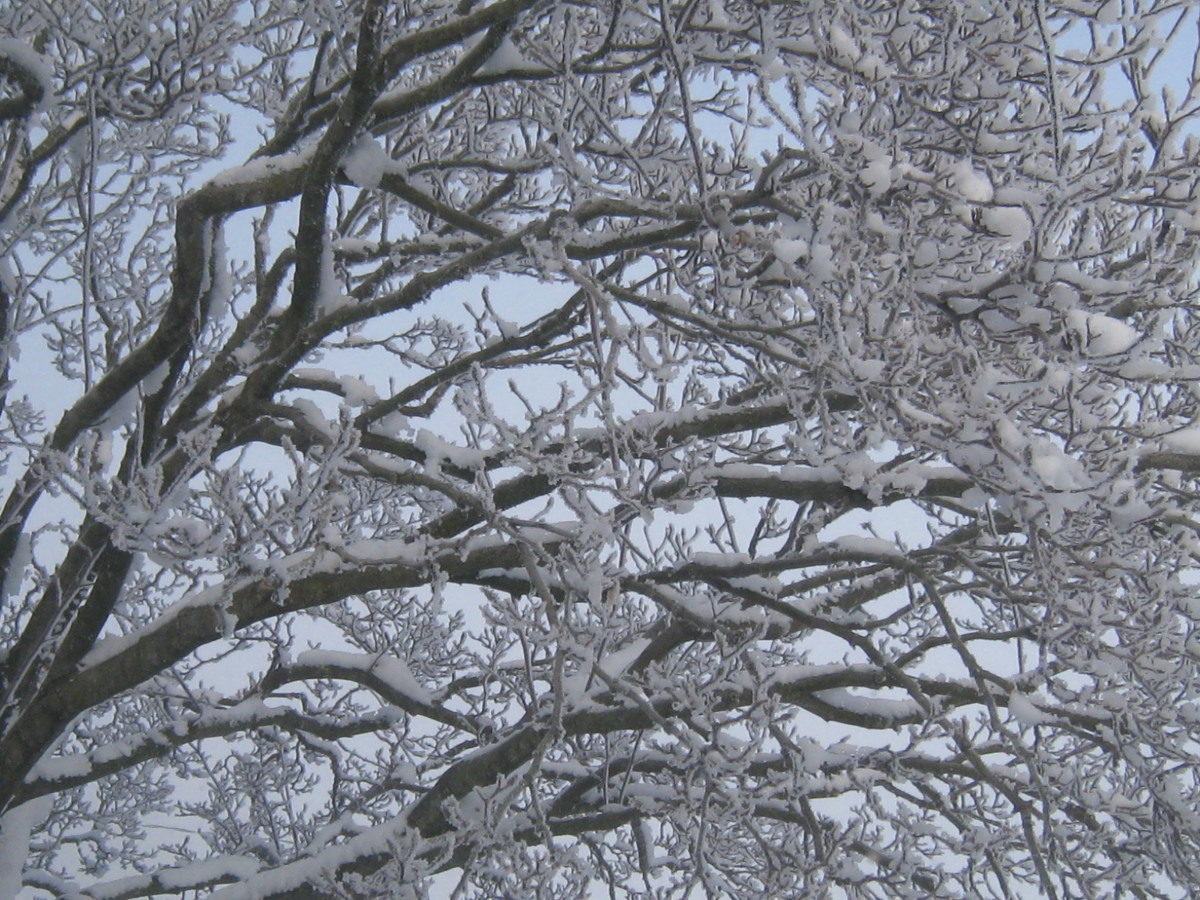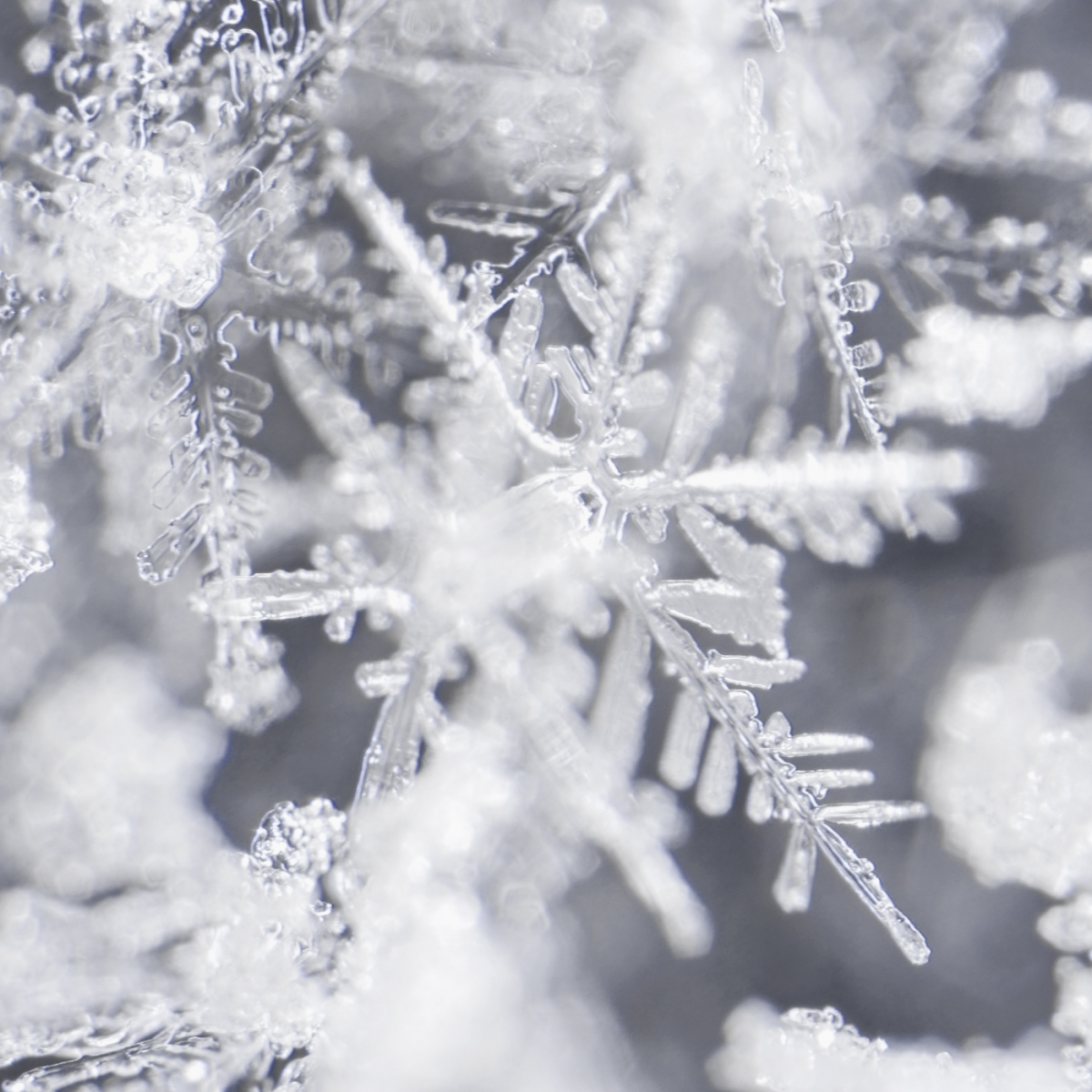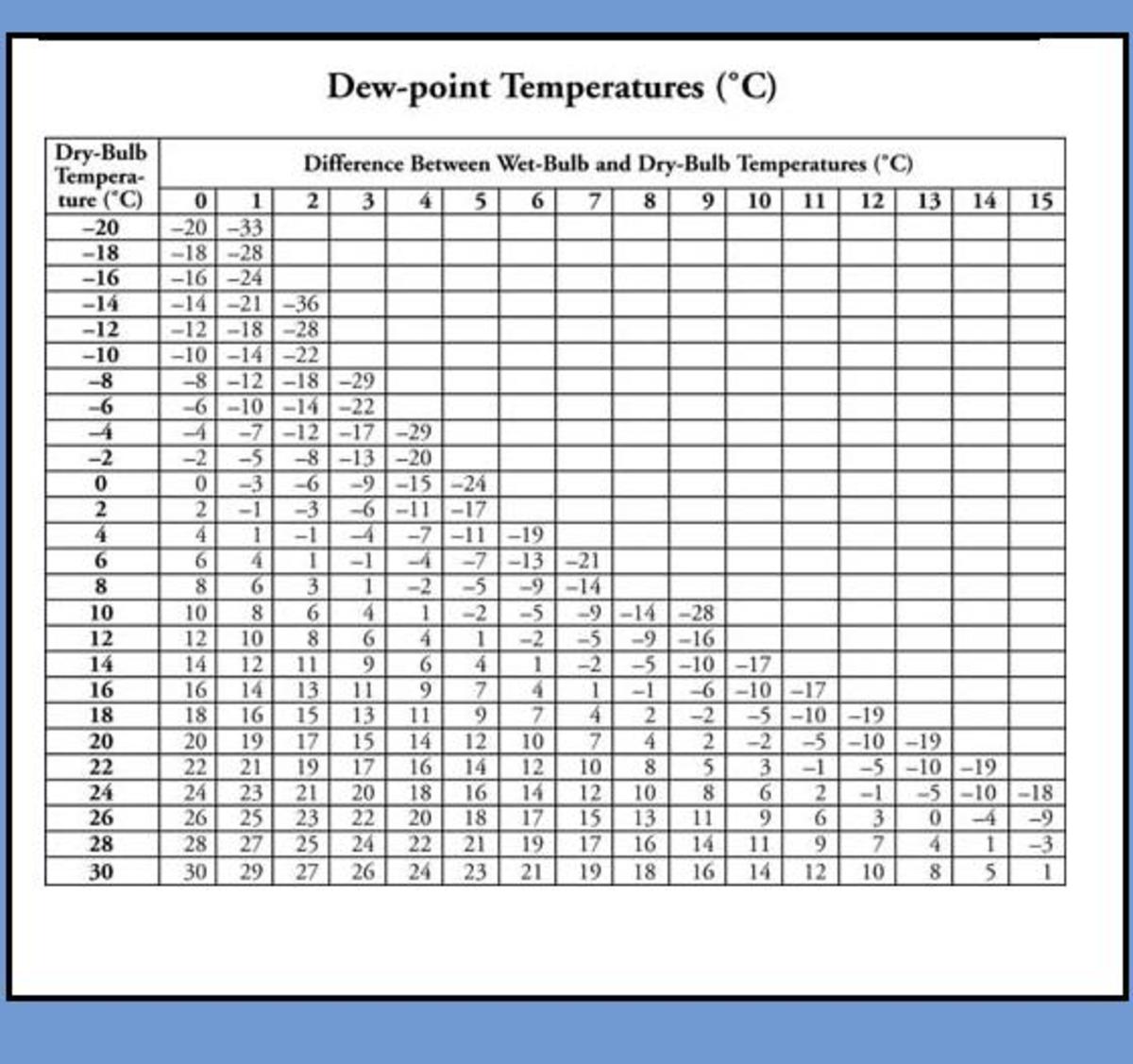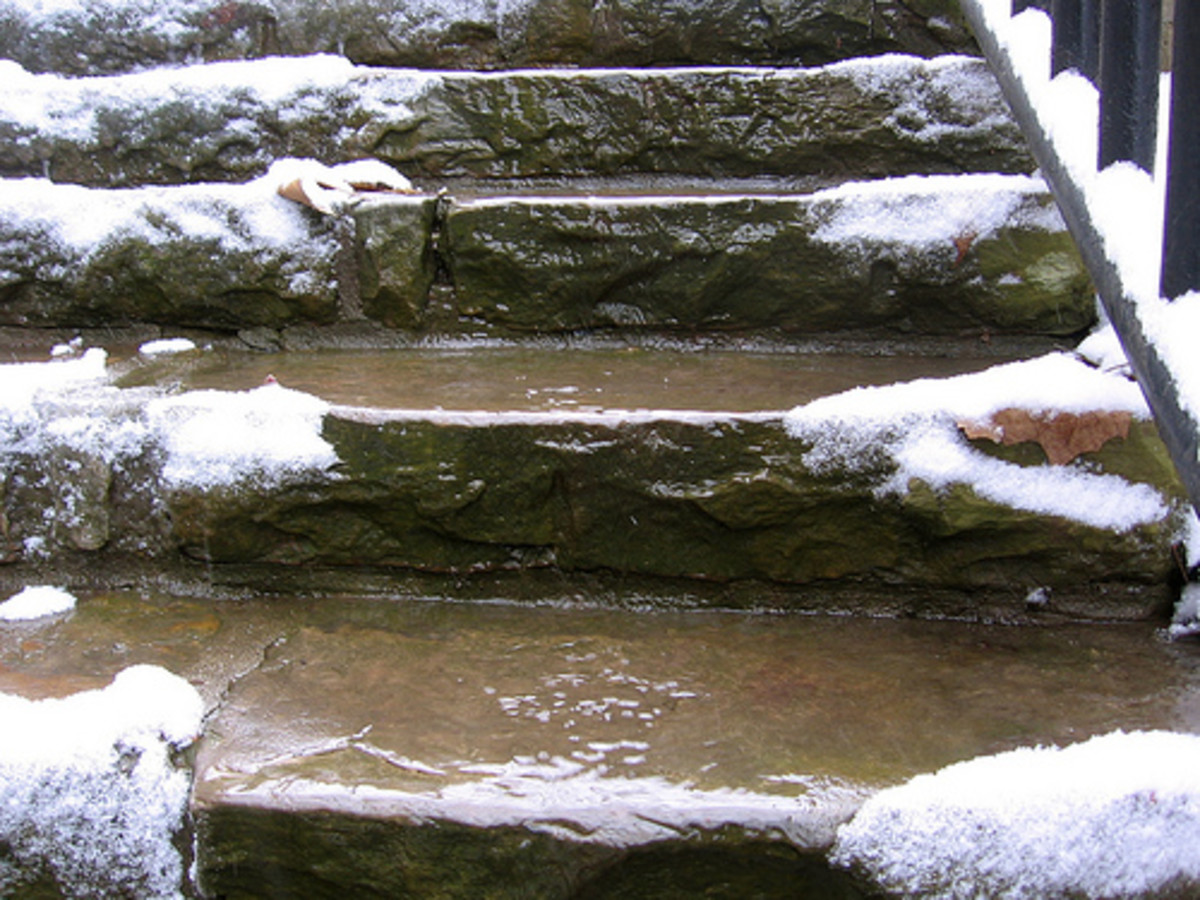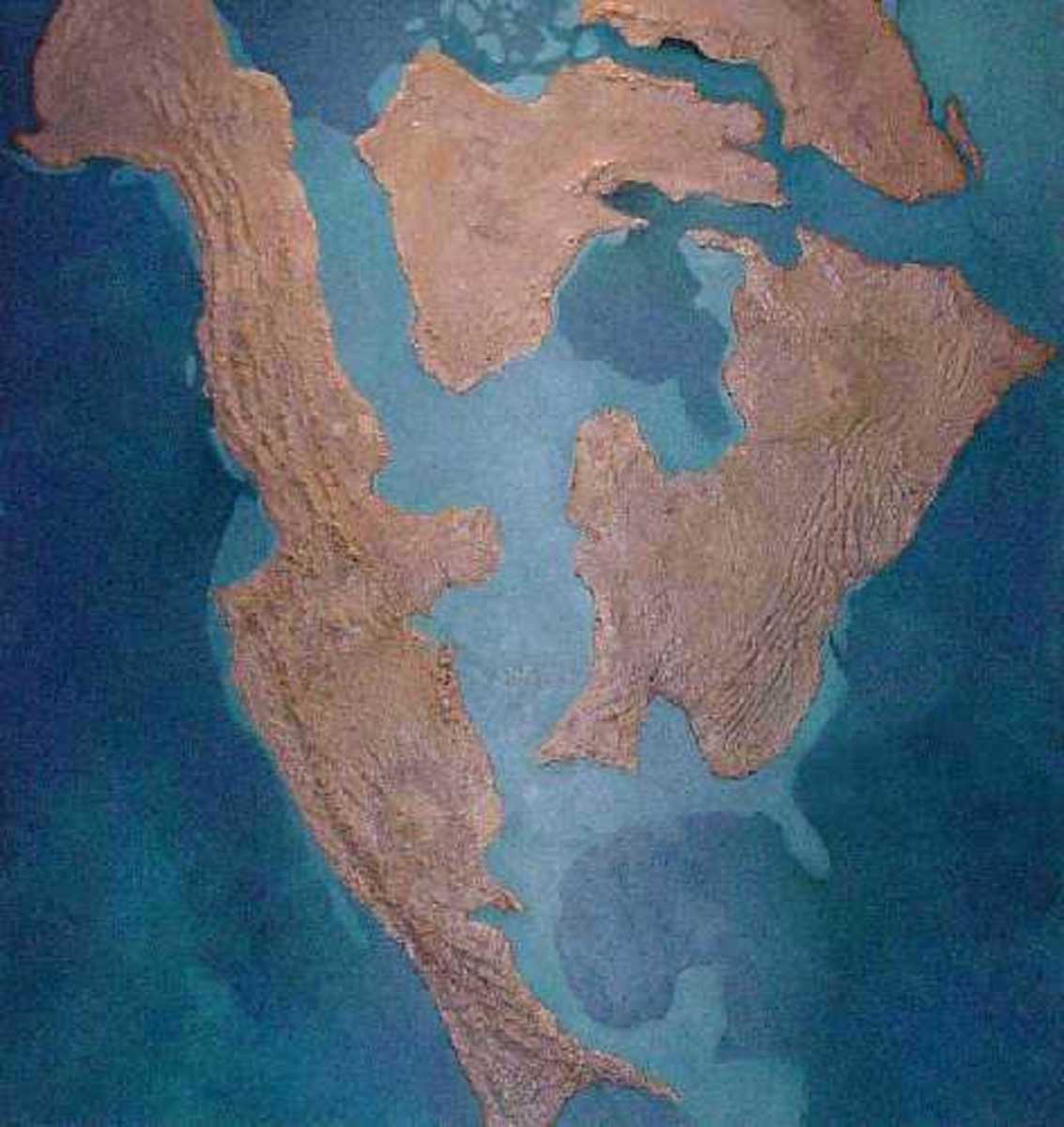Snowflakes are Born from Tiny Ice Crystals in the Sky
Snowflakes are Born from Tiny Ice Crystals
Snow falls in the Northern U.S., and everywhere else in the northern hemisphere when temperatures are right and cold enough for snowflakes to be able to form. Snowflakes are six-sided hexagonal structures that fall to the earth in the winter time. How do snowflakes form? Snowflakes have their birth in cold clouds. Cold clouds exist high up in the atmosphere where the temperatures are at or below freezing. It is from these cold clouds that snowflakes have their origin. Snowflakes originate as tiny ice crystals. Ice crystals are blown back and forth between the top and bottom of the cold cloud, and as they do they grow in two ways: coalescence or deposition. In coalescence the ice crystals collide and stick together with cold water droplets that are within the cloud to form a whole, which is a tiny snowflake. In deposition water vapor molecules directly freeze onto the ice crystal to form a snowflake. Most people are familiar with snow and snowfall, especially people, who live in the north where it always snows in the winter, usually December through April. It snowed in the Midwest May 1, 2013. (unusual, but not unheard of).
A snowflake forms when one ice crystal forms with other ice crystals to become a snowflake. A snowflake has six sides or arms; so a snowflake takes on a hexagonal structure. All snowflakes have a hexagonal structure, but no two snowflakes are exactly alike. The reason why no two snowflakes are alike is because each snowflake falls through different degrees of temperature and humidity conditions of the air that surrounds them, which makes each tiny snowflake unique from every other snowflake. The variations of snowflakes are unlimited.
A Winter Scene
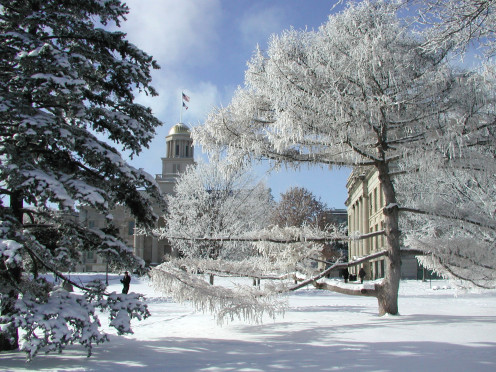
Hexagonal Snowflake
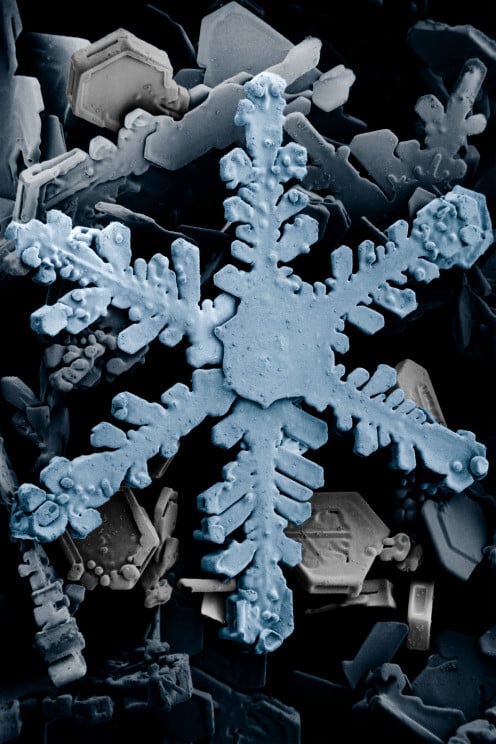
Snowflakes and Snowfall
Snowflakes have to be heavier than the air that surrounds them, in order for the snowflakes to fall through the atmosphere to the surface of the earth as snowfall. Snowflakes are not guaranteed to make it to the ground as snowfall. The air temperatures must be below 0° all the way to the ground, so that the snowflakes can reach the ground and accumulate as snowfall. Snowflakes grow larger and larger as they fall through the atmosphere to the surface of the earth to become snowfall. Snowflakes have so many different designs, for example: some temperature and humidity combinations can produce snowflakes with long needle-like arms, yet, other conditions produce snowflakes with wide flat arms, and other conditions produce snowflakes with thin-branching arms, which makes snowflakes so unique.
Snowflakes form sleet if they pass through a warm layer of air and partially melt. After the partially melted snowflakes leave the warm layer of air; they refreeze on their way down to form tiny ice pellets that fall to the ground, which can makes the surface of the earth extremely slippery. Freezing rain is caused by snowflakes passing through a layer of warm air that is thick enough to melt the snowflakes completely; then the melted snowflakes (now freezing rain) fall to the cold surface of the earth as freezing rain; freeze and form ice all over the cold surface of the earth, which makes for extremely slippery surfaces and extremely dangerous driving conditions.
How Snowflakes Form in the Atmosphere
Winter Scene in the Park
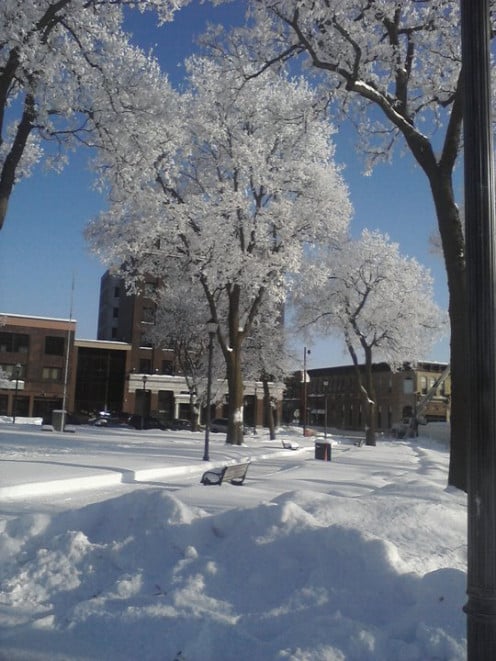
Snow in the Midwest March 11, 2013
The Midwest just recently was hit with a big snowstorm (March !0-11). The Mason City, Iowa area got 10 to 12 inches of snowfall. The snow was wet and heavy. People are still digging themselves out. More snow might be on the way. A big band of snow went through the area from Nebraska Sunday night through Monday. There are a lot of snowflakes that accumulated on the ground, and the snow is very deep. The snow made traveling extremely difficult, many got stuck in the snow and needed help getting unstuck. Before the snow started falling, it had been raining, so the roads were icy with the snow on top. It will take a while to clear all of the snow from the roads, streets, parking lots, and sidewalks. Hopefully, the snow won't be around for long as spring is not very far away. It will be nice when the snow is all gone, and, then, it will be warm again.


